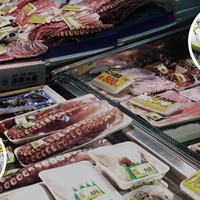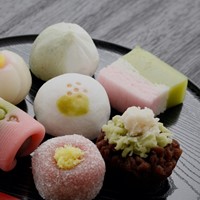Unagi Kabayaki: Exploring the Differences Between Edo Style and Kansai Style

This article is contributed by Japan Culinary Arts Academy.
Unagi Kabayaki, a beloved Japanese delicacy, is prepared differently depending on the region, resulting in distinct culinary experiences. The two main styles are Edo-style (Tokyo-style) and Kansai-style (Osaka-style). Let’s dive into what sets them apart.
Preparation Techniques
In Edo-style, the eel is split along the back in a method called "back-splitting," a practice rooted in samurai culture to avoid the symbolism of belly-slitting associated with seppuku (ritual suicide). After splitting, the eel undergoes a steaming process known as shirayaki before being grilled. This step removes excess fat, giving the eel a soft, fluffy texture.
Kansai-style, on the other hand, employs "belly-splitting," which reflects the region’s merchant culture, unconcerned with such symbolism. The eel is grilled directly without steaming, allowing its natural fat to enhance the flavor while imparting a distinct, smoky aroma.

Cooking Processes
The cooking methods further highlight the differences. Edo-style Kabayaki involves steaming the eel before grilling, during which it is basted with a sweet soy-based sauce. This process ensures tender meat and allows the sauce to deeply infuse the eel.
In Kansai-style, the eel is grilled directly from its raw state while being basted with sauce. This method produces a crisp exterior and a smoky, firm texture that emphasizes the natural richness of the eel.

Final Textures
Edo-style Kabayaki boasts a soft, tender texture with a harmonious blend of the sauce and eel, thanks to the steaming process. Conversely, Kansai-style Kabayaki delivers a crisp exterior highlighting the eel's natural flavors and fat.

Additional Differences
Even the sauces and cultural backgrounds differ. Edo-style sauces are typically sweeter, complementing the delicate texture of the eel. Kansai-style sauces are richer and more savory, aligning with the bold flavors of the dish. Edo-style Kabayaki originated as a refined dish for the common people of Edo (modern Tokyo), while Kansai-style reflects the vibrant food culture of Osaka’s merchants.
Summary
If you prefer a soft texture and a subtle, balanced flavor, Edo-style Kabayaki is ideal. For those who enjoy smokiness and the natural taste of eel, Kansai-style Kabayaki is the way to go. Both styles offer unique delights, making it worthwhile to try and compare them.
Additionally, there’s another fascinating variation to explore—the "Ogata Style," created by Mr. Ogata, often referred to as the "God of Eels." Based in Kokura, he has developed a unique grilling method that sets his preparation apart. Perhaps this innovative style can be introduced in more detail in the future.

Mr. Ogata's son was present at the Eel Festival in Comacchio, Italy, this September.
Japan Culinary Arts Academy
Japan Culinary Arts Academy offers classes on Washoku (traditional Japanese cuisine) specifically designed for international students. Whether you're aspiring to become a certified Japanese cuisine chef or simply looking to master dishes like ramen, unagi, sushi, or yakitori, their programs provide an authentic and immersive learning experience. Visit their website for more details and start your culinary journey!










